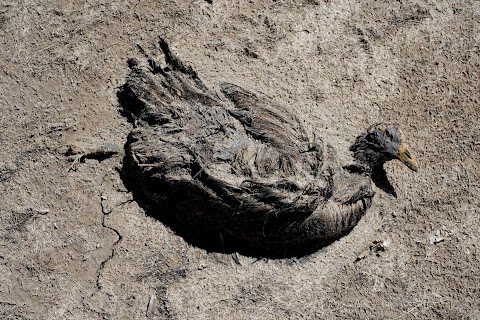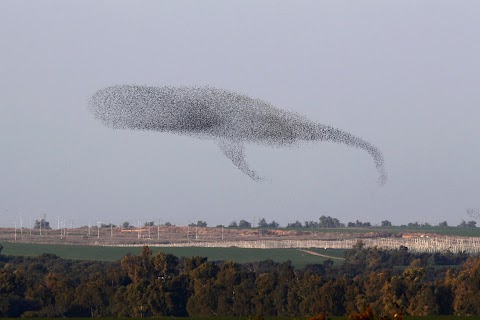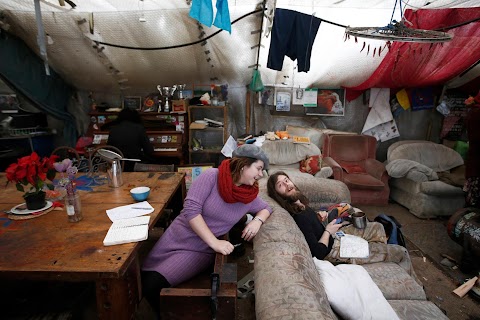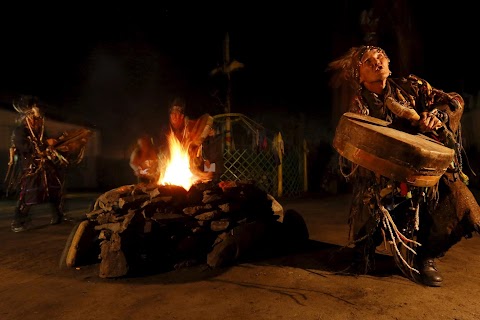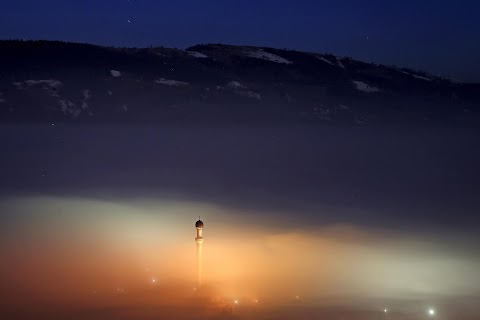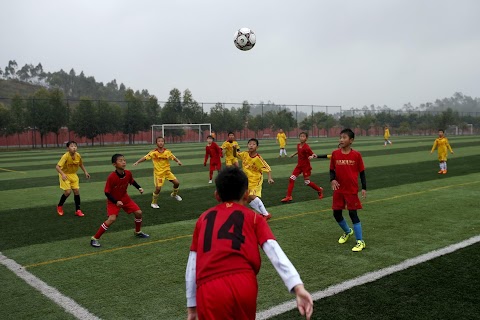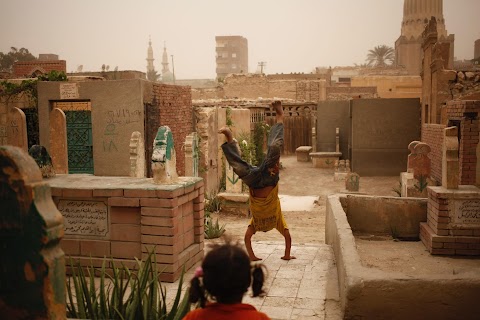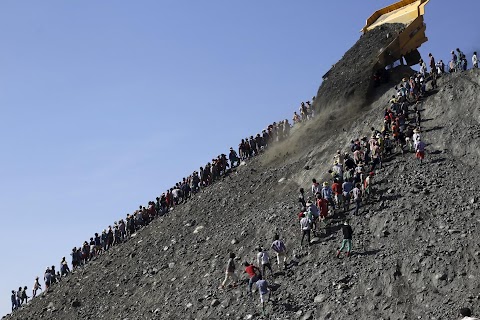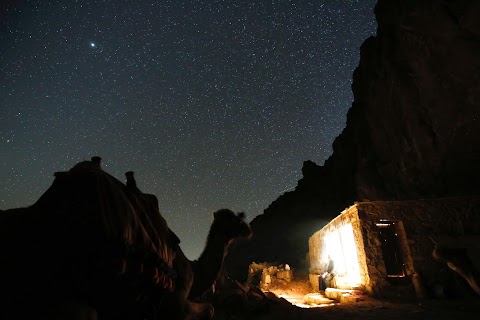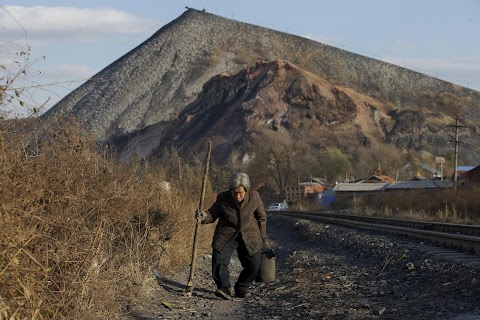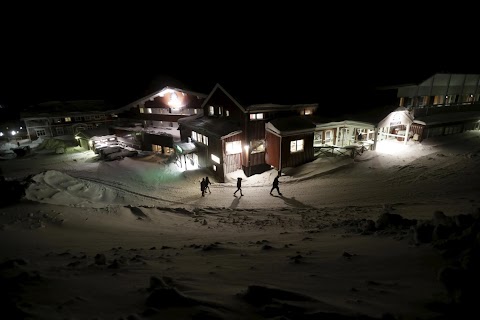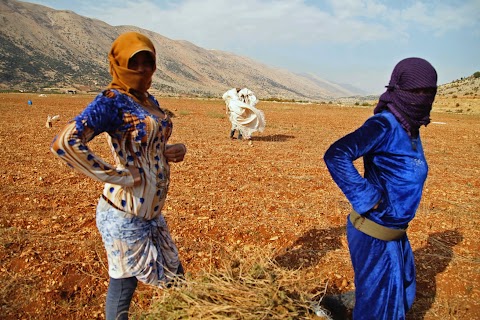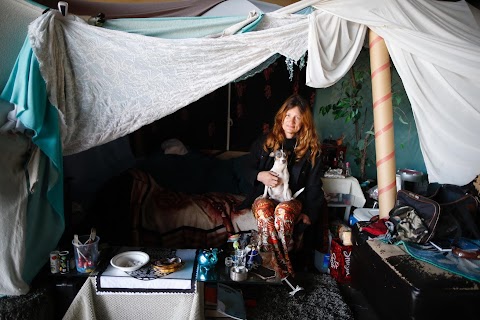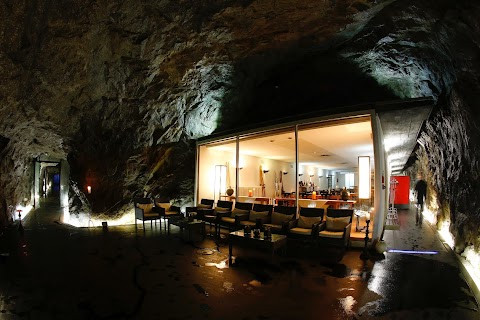
A room without a view
 Arnd Wiegmann and Joshua Franklin
Arnd Wiegmann and Joshua Franklin
For upwards of almost $200 a night, guests at a Swiss hotel might expect to catch a glimpse of the towering Alps or overlook one of the country's famous lakes. But visitors to Hotel La Claustra get a room without a view.
The 17-room hotel is buried in the Gotthard mountain range and, with cavernous walls and minimalist interior, offers the chance to spend a few nights in an ex-army bunker.

La Claustra is part of a wider trend in Switzerland for recycling the plentiful decommissioned bunkers first carved out to defend the famously neutral country from foreign invasion.
From data centres to museums, mushroom farms to cheese factories, businesses have been refashioning the former strongholds.
"Along with our processors, our key selling points are the Swiss brand and the physical safety of this bunker," said Frank Harzheim, managing director at Deltalis data centre, located in a bunker which once housed up to 1,500 soldiers.

During World War Two, Switzerland had a network of around 8,000 bunkers and military shelters. Faced with high maintenance costs and a cooling threat of invasion, the Swiss army since the 1990s has handed a property unit the task of trimming that number down.
The vast majority have now been bought, sealed off, or set aside for historical preservation and are dotted around Switzerland, often still disguised as barns and houses.
The defensive tendencies that spawned Switzerland's bunker building are legendary.
According to one possibly apocryphal story repeated with pride for more than a century, Germany's Kaiser Wilhelm II on a visit in 1912 was said to have asked a Swiss infantryman what 100,000 Swiss soldiers would do if 200,000 German invaders stormed over the border.

"Each would have to shoot twice, your majesty," came the supposed reply.
Museums like Sasso San Gottardo, built in a former fortress, look to tell the story of Swiss efforts to stave off invasion in the 20th century.
After Germany invaded France in 1940, Switzerland was surrounded by Axis powers and recognised that it would be out-gunned in any assault.
To hold off an invasion, Switzerland sought to make itself prohibitively difficult to conquer. Under the plan dubbed the National Redoubt, much of the country's manpower and firepower would retreat to the mountains if a foreign aggressor attacked.

Through its chain of fortresses and bunkers, Switzerland would keep control of the mountains along with key transit routes.
"This was a pragmatic solution but also a very problematic one," said Rudolf Jaun, a former Swiss history professor at Zurich University. "The Redoubt strategy was what we call in German a Notloesung (emergency solution)."
During the Cold War, concerns turned to nuclear attack. The Swiss ramped up military spending and many homes were required to be equipped with bomb shelters.
As with the bunkers, the Swiss have found new uses for these bomb shelters too - nowadays many are simply used to store family knick-knacks and wine collections.
Slideshow

A tunnel connects the bunkers at a former Swiss Army artillery fort in Faulensee, Switzerland. The fort was in military use from 1943 to 1993 and is now open to the public as a museum.

An artillery control room is seen in a bunker at a former artillery fort in the town of Faulensee, Switzerland. The facility was in military use from 1943 to 1993 and is now a museum.

A 10.5cm gun stands in a bunker at a former Swiss Army fort in the town of Faulensee, Switzerland. The fort was in military use from 1943 to 1993 and is now a museum.

A view shows an operating room at the former Swiss artillery fortress Reuenthal near the village of Reuenthal, Switzerland. Located on the Swiss-German border near the rivers Rhine and Aare, the fortress was built from 1937 to 1939 and remained in military use until 1988. Since 1989 it has been a museum.

Cows stand in a meadow in front of a 10.5cm gun at the former artillery fort of the Swiss Army in Faulensee, Switzerland. The fort was in military use from 1943 to 1993 and is now as a museum.

A former infantry bunker camouflaged as a medieval house is reflected in a mirror in Duggingen, Switzerland.

A former infantry bunker is camouflaged as a medieval house in the town of Duggingen, Switzerland.

A bunker at a former Swiss artillery fortress called Heldsberg stands near the town of St. Margareten, Switzerland. Located on the Swiss-Austrian border near the River Rhine and Lake Constance, the fortress was built from 1938 to 1940 and remained in military use until 1992. Since 1993 it has been a museum.

Cyclists ride past the Hotel La Claustra located in a former Swiss army bunker on the St. Gotthard mountain pass, Switzerland.

A sign reads "Military site - Entering and photography forbidden" at former Swiss artillery fortress Sasso da Pigna on the St. Gotthard mountain pass, Switzerland. Located at 2,106 m altitude on the St. Gotthard mountain pass, the fortress was built from 1941 to 1945 and remained in military use until 1999. Since 2012 it has been a museum.

Alex Lussi of Swiss mushroom producer Gotthard-Pilze picks a shiitake mushroom inside a former ammunition bunker of the Swiss Army near Erstfeld, Switzerland. In 11 former bunkers Gotthard-Pilze produces some 24 tons of shiitake mushrooms per year.

Raclette cheeses made by Swiss cheesemaker Seiler Kaeserei AG mature in storage racks in a former Swiss army ammunition bunker in Giswil, Switzerland.

The Urserental valley is seen behind a camouflaged canon at a former Swiss artillery fortress called Fuchsegg near the village of Realp, in the central Swiss Alps. The fortress was built in 1943 and remained in military use until 1993.

Barbed wire protects a bunker at former Swiss artillery fortress Reuenthal near the village of Reuenthaluly, Switzerland. Located on the Swiss-German border near the rivers Rhine and Aare, the fortress was built from 1937 to 1939 and remained in military use until 1988. Since 1989 it has been a museum.

Chains camouflage a bunker containing a 15cm gun in the former artillery fort Furggels of the Swiss Army near the village of St. Magrethenberg, Switzerland. The fort was in military use from 1946 to 1998 and is now a museum.

The view through the muzzle of a 10.5cm gun is seen at a bunker of the former artillery fort of the Swiss Army in the town of Faulensee, Switzerland. The fort was in military use from 1943 to 1993 and is now a museum.

A camouflaged 10.5cm gun at the former artillery fort Furggels of the Swiss Army is seen near the village of St. Magrethenberg, Switzerland. The fort was in military use from 1946 to 1998 and is now a museum.
